
Monday, December 15, 2014
Friday, December 12, 2014
Chuck Cooper 1st Black player drafted by an NBA Team.
 Charles Henry "Chuck" Cooper was an American professional basketball player. He and two others, Nat "Sweetwater" Clifton and Earl Lloyd, became the 1st African American players in the NBA in 1950. Cooper was also the 1st African-American to be drafted by an NBA team, as the 1st pick of the 2nd round by the Boston Celtics. Cooper was born and in Pittsburgh, Pennsylvania. He graduated from Pittsburgh's Westinghouse High School. He then attended and played basketball for West Virginia State College (now University) and then Duquesne University. Cooper was signed by Boston Celtics coach Red Auerbach. He played 4 years with the Celtics, then was traded to the Milwaukee Hawks before ending his career as a member of the Ft. Wayne Pistons. During his NBA career, Cooper played a total of 409 games, scored 2,725 points for an average of 6.66 points per game, had 2431 rebounds for an average of 5.9 per game, and had 733 assists for an average of 1.79 per game.
Charles Henry "Chuck" Cooper was an American professional basketball player. He and two others, Nat "Sweetwater" Clifton and Earl Lloyd, became the 1st African American players in the NBA in 1950. Cooper was also the 1st African-American to be drafted by an NBA team, as the 1st pick of the 2nd round by the Boston Celtics. Cooper was born and in Pittsburgh, Pennsylvania. He graduated from Pittsburgh's Westinghouse High School. He then attended and played basketball for West Virginia State College (now University) and then Duquesne University. Cooper was signed by Boston Celtics coach Red Auerbach. He played 4 years with the Celtics, then was traded to the Milwaukee Hawks before ending his career as a member of the Ft. Wayne Pistons. During his NBA career, Cooper played a total of 409 games, scored 2,725 points for an average of 6.66 points per game, had 2431 rebounds for an average of 5.9 per game, and had 733 assists for an average of 1.79 per game. 

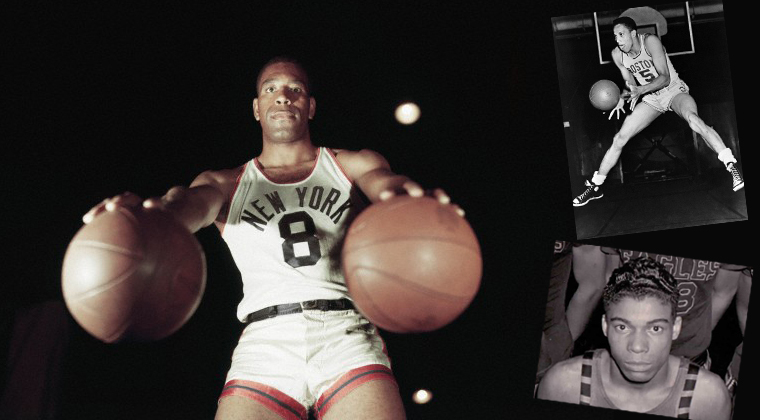


Victoria Spivey- Blues Singer and Owner of Spivey Records.

 Victoria Spivey was an American blues singer and songwriter. During a recording career that spanned 40 years, from 1926 to the mid-1960s, she worked with Louis Armstrong, King Oliver, Clarence Williams, Luis Russell, Lonnie Johnson, and Bob Dylan. She also performed in vaudeville and clubs, sometimes with her sister, Addie "Sweet Pease" Spivey. Among her compositions are "Black Snake Blues", "Dope Head Blues" and "Organ Grinder Blues". In 1962 she initiated her own recording label, Spivey Records. Spivey's first professional experience was in a family string band led by her father in Houston. After Grant Spivey died, the seven-year-old Victoria played on her own at local parties and, in 1918, was hired to accompany films at the Lincoln Theater in Dallas. In 1926, she moved to St. Louis, Missouri, where she was signed by Okeh Records. Her first recording, "Black Snake Blues", did well, and her association with the record label continued. In 1929 she switched to the RCA Victor label. In 1951, Spivey retired from show business to play the pipe organ and lead a church choir, but she returned to secular music in 1961, when she was reunited with an old singing partner, Lonnie Johnson, to appear on four tracks on his Prestige Bluesville album, Idle Hours. In 1962, Spivey and jazz historian Len Kunstadt launched Spivey Records, a low-budget label dedicated to blues and related music. They recorded prolifically such performers as Sippie Wallace, Lucille Hegamin, Otis Rush, Otis Spann, Willie Dixon, Roosevelt Sykes, Big Joe Turner, Buddy Tate and Hannah Sylvester.
Victoria Spivey was an American blues singer and songwriter. During a recording career that spanned 40 years, from 1926 to the mid-1960s, she worked with Louis Armstrong, King Oliver, Clarence Williams, Luis Russell, Lonnie Johnson, and Bob Dylan. She also performed in vaudeville and clubs, sometimes with her sister, Addie "Sweet Pease" Spivey. Among her compositions are "Black Snake Blues", "Dope Head Blues" and "Organ Grinder Blues". In 1962 she initiated her own recording label, Spivey Records. Spivey's first professional experience was in a family string band led by her father in Houston. After Grant Spivey died, the seven-year-old Victoria played on her own at local parties and, in 1918, was hired to accompany films at the Lincoln Theater in Dallas. In 1926, she moved to St. Louis, Missouri, where she was signed by Okeh Records. Her first recording, "Black Snake Blues", did well, and her association with the record label continued. In 1929 she switched to the RCA Victor label. In 1951, Spivey retired from show business to play the pipe organ and lead a church choir, but she returned to secular music in 1961, when she was reunited with an old singing partner, Lonnie Johnson, to appear on four tracks on his Prestige Bluesville album, Idle Hours. In 1962, Spivey and jazz historian Len Kunstadt launched Spivey Records, a low-budget label dedicated to blues and related music. They recorded prolifically such performers as Sippie Wallace, Lucille Hegamin, Otis Rush, Otis Spann, Willie Dixon, Roosevelt Sykes, Big Joe Turner, Buddy Tate and Hannah Sylvester. 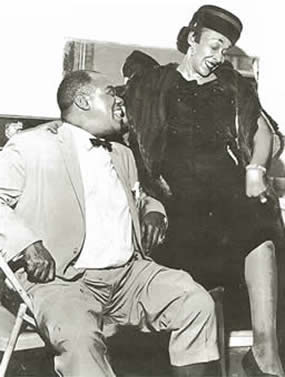
+(1964).jpg)
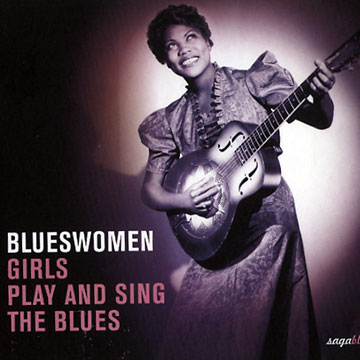




Thursday, December 11, 2014
Maya A. Moore 1st female basketball player to sign with Jordan Brand.

 Maya April Moore is an American professional basketball player for the Minnesota Lynx of the Women's National Basketball Association (WNBA) and the Shanxi Flame of the Chinese league. Moore was the winner of the 2006 and 2007 Naismith Prep Player of the Year. Moore played forward for the UConn women's basketball team, and won back to back undefeated national championships in 2009 and 2010. She was selected as the John Wooden Award winner in 2009 after leading Connecticut to the undefeated national championship. The following season, Moore led Connecticut to its second straight national championship and continued its overall undefeated streak at 78; in the 2010–11 season, she led the Huskies in extending that streak to an NCAA both-gender record (all divisions) of 90. On May 18, 2011, Moore became the first female basketball player to sign with Jordan Brand. Moore was the 1st overall pick in the 2011 WNBA Draft, and joined a Minnesota Lynx team. Moore earned Rookie of the Year honors. Moore then helped lead her team to its 1st WNBA championship, the 2nd number one draft pick to do so. Moore also won a gold medal with the U.S. women's basketball team in the 2012 London Olympics. She won her 2nd WNBA championship in 2013, in a series where she was named MVP. In 2014, Moore was chosen the WNBA's Most Valuable Player. Moore also won another gold medal with the U.S. women's basketball team in the 2014 FIBA World Championship for Women, as well as being named MVP of the tournament. Moore had her first exposure to basketball at the age of three when her mother mounted a hoop on the back door of their apartment. In addition to basketball, she also participated in track and field and finished as the 1st-place runner-up in the high jump at the 2005 Georgia State 5A Championships. She was also an excellent student,as she graduated from high school with a 4.0 grade point average...recipient of the Atlanta Journal Cup.
Maya April Moore is an American professional basketball player for the Minnesota Lynx of the Women's National Basketball Association (WNBA) and the Shanxi Flame of the Chinese league. Moore was the winner of the 2006 and 2007 Naismith Prep Player of the Year. Moore played forward for the UConn women's basketball team, and won back to back undefeated national championships in 2009 and 2010. She was selected as the John Wooden Award winner in 2009 after leading Connecticut to the undefeated national championship. The following season, Moore led Connecticut to its second straight national championship and continued its overall undefeated streak at 78; in the 2010–11 season, she led the Huskies in extending that streak to an NCAA both-gender record (all divisions) of 90. On May 18, 2011, Moore became the first female basketball player to sign with Jordan Brand. Moore was the 1st overall pick in the 2011 WNBA Draft, and joined a Minnesota Lynx team. Moore earned Rookie of the Year honors. Moore then helped lead her team to its 1st WNBA championship, the 2nd number one draft pick to do so. Moore also won a gold medal with the U.S. women's basketball team in the 2012 London Olympics. She won her 2nd WNBA championship in 2013, in a series where she was named MVP. In 2014, Moore was chosen the WNBA's Most Valuable Player. Moore also won another gold medal with the U.S. women's basketball team in the 2014 FIBA World Championship for Women, as well as being named MVP of the tournament. Moore had her first exposure to basketball at the age of three when her mother mounted a hoop on the back door of their apartment. In addition to basketball, she also participated in track and field and finished as the 1st-place runner-up in the high jump at the 2005 Georgia State 5A Championships. She was also an excellent student,as she graduated from high school with a 4.0 grade point average...recipient of the Atlanta Journal Cup. 



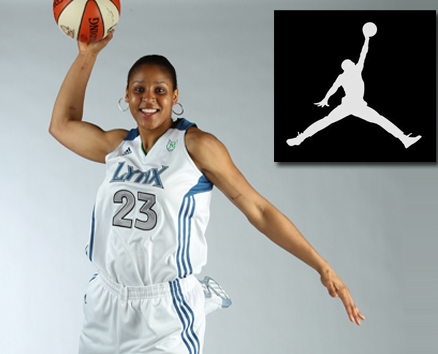



Don Barksdale-1st to be named NCAA All-American

 Donald Argee "Don" Barksdale was an American professional basketball player. He was a pioneer as an African-American basketball player, becoming the 1st to be named NCAA All-American, the 1st to play on a United States men's Olympic basketball team, and the 1st to play in an National Basketball Association All-Star Game. He was inducted into the Naismith Memorial Basketball Hall of Fame. Born in Oakland, California to Argee and Desoree Barksdale, Don attended nearby Berkeley High School, where the basketball coach cut him from the team for 3 straight years because he wanted no more than 1 black player. Barksdale honed his basketball playing skills in parks, and then played for 2 years at Marin Junior College before earning a scholarship to UCLA. A 6'6" center for the Bruins, in 1947 he became the 1st African American to be named consensus All-American. Barksdale was a member of Alpha Phi Alpha fraternity. In 1948, he was the 1st African-American on the U.S. Olympic basketball team and the 1st African-American to win an Olympic gold medal in basketball. Maggiora told Barksdale that some committee members' responses to the idea of having a black Olympian was "Hell no, that will never happen." But Maggiora wouldn't let the committee bypass Barksdale. Barksdale became the 1st African-American to play against Kentucky in Lexington, although he could not stay at the hotel with the rest of the team. Adolph Rupp, the legendary Kentucky coach, turned out to be my closest friend," Barksdale said. "We went to London and won all 12 games and got the gold medal." After college, he played for the Oakland AAU team until the NBA began to integrate. He started a career in radio broadcasting, and became the 1st black radio disc jockey in the San Francisco Bay area. He worked in television and became the 1st African-American beer distributor and the 1st African-American television host in the Bay area with a show called Sepia Review on KRON-TV. In 1951, he signed a lucrative contract with the Baltimore Bullets and entered the NBA as a 28-year-old rookie. He would be one of the 1st African-Americans to play in the NBA. After his basketball career ended he returned to radio, started his own recording label and opened two nightclubs in Oakland. In 1983 he launched the Save High School Sports Foundation.
Donald Argee "Don" Barksdale was an American professional basketball player. He was a pioneer as an African-American basketball player, becoming the 1st to be named NCAA All-American, the 1st to play on a United States men's Olympic basketball team, and the 1st to play in an National Basketball Association All-Star Game. He was inducted into the Naismith Memorial Basketball Hall of Fame. Born in Oakland, California to Argee and Desoree Barksdale, Don attended nearby Berkeley High School, where the basketball coach cut him from the team for 3 straight years because he wanted no more than 1 black player. Barksdale honed his basketball playing skills in parks, and then played for 2 years at Marin Junior College before earning a scholarship to UCLA. A 6'6" center for the Bruins, in 1947 he became the 1st African American to be named consensus All-American. Barksdale was a member of Alpha Phi Alpha fraternity. In 1948, he was the 1st African-American on the U.S. Olympic basketball team and the 1st African-American to win an Olympic gold medal in basketball. Maggiora told Barksdale that some committee members' responses to the idea of having a black Olympian was "Hell no, that will never happen." But Maggiora wouldn't let the committee bypass Barksdale. Barksdale became the 1st African-American to play against Kentucky in Lexington, although he could not stay at the hotel with the rest of the team. Adolph Rupp, the legendary Kentucky coach, turned out to be my closest friend," Barksdale said. "We went to London and won all 12 games and got the gold medal." After college, he played for the Oakland AAU team until the NBA began to integrate. He started a career in radio broadcasting, and became the 1st black radio disc jockey in the San Francisco Bay area. He worked in television and became the 1st African-American beer distributor and the 1st African-American television host in the Bay area with a show called Sepia Review on KRON-TV. In 1951, he signed a lucrative contract with the Baltimore Bullets and entered the NBA as a 28-year-old rookie. He would be one of the 1st African-Americans to play in the NBA. After his basketball career ended he returned to radio, started his own recording label and opened two nightclubs in Oakland. In 1983 he launched the Save High School Sports Foundation. 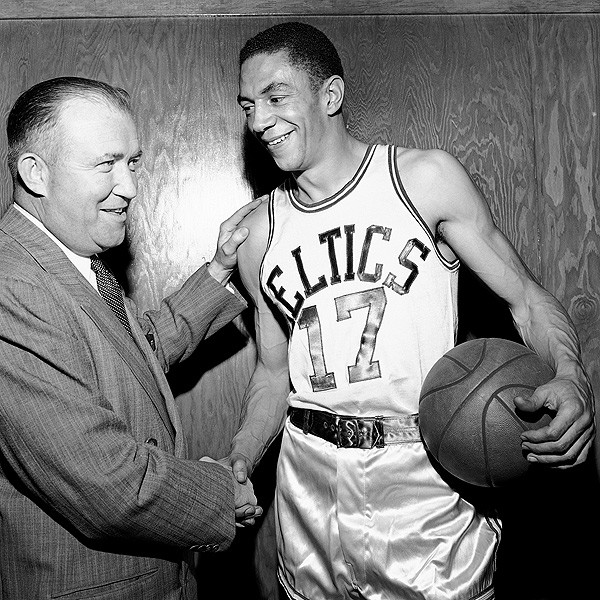



Wednesday, December 10, 2014
Nina Mae McKinney -One of the 1st African-American Film Stars in the U.S and British TV

 Nina Mae McKinney was an American actress who worked internationally during the 1930s and in the postwar period in theatre, film and television, after getting her start on Broadway and in Hollywood. Dubbed "The Black Garbo" in Europe because of her striking beauty,[1] McKinney was one of the 1st African-American film stars in the United States, as well as one of the 1st African Americans to appear on British television. McKinney was born in 1912 in the small town of Lancaster, South Carolina, to Georgia and Hal McKinney. Her parents moved to New York and left their young daughter with her Aunt Carrie. McKinney ran errands for her aunt and learned to ride a bike. She soon was performing stunts on bikes, where her passion for acting was obvious. She acted in school plays in Lancaster and taught herself to dance. McKinney left school at the age of 15 and moved to New York to pursue acting, where she was reunited with her parents. Her debut on Broadway was dancing in a chorus line of the hit musical Blackbirds of 1928. This show starred Bill "Bojangles" Robinson and Adelaide Hall. Looking for a star in his upcoming movie, Hallelujah!, the Hollywood film director King Vidor spotted McKinney in the chorus line of Blackbirds. In Hallelujah (1929), McKinney was the 1st African-American actress to hold a principal role in a mainstream film; it had an African-American cast. After Hallelujah!, McKinney signed a five-year contract with MGM; she was the 1st African-American actor to sign a long-term contract with a major studio. Although McKinney was strikingly beautiful, Hollywood was afraid to make her into a glamorized icon like white actresses of the time. In Europe McKinney was nicknamed the “Black Garbo,” because of her striking beauty. In 1978, McKinney received a posthumous award from the Black Filmmakers Hall of Fame for her lifetime achievement. A portrait of McKinney is displayed in her hometown of Lancaster, South Carolina, at the courthouse’s "Wall of Fame."
Nina Mae McKinney was an American actress who worked internationally during the 1930s and in the postwar period in theatre, film and television, after getting her start on Broadway and in Hollywood. Dubbed "The Black Garbo" in Europe because of her striking beauty,[1] McKinney was one of the 1st African-American film stars in the United States, as well as one of the 1st African Americans to appear on British television. McKinney was born in 1912 in the small town of Lancaster, South Carolina, to Georgia and Hal McKinney. Her parents moved to New York and left their young daughter with her Aunt Carrie. McKinney ran errands for her aunt and learned to ride a bike. She soon was performing stunts on bikes, where her passion for acting was obvious. She acted in school plays in Lancaster and taught herself to dance. McKinney left school at the age of 15 and moved to New York to pursue acting, where she was reunited with her parents. Her debut on Broadway was dancing in a chorus line of the hit musical Blackbirds of 1928. This show starred Bill "Bojangles" Robinson and Adelaide Hall. Looking for a star in his upcoming movie, Hallelujah!, the Hollywood film director King Vidor spotted McKinney in the chorus line of Blackbirds. In Hallelujah (1929), McKinney was the 1st African-American actress to hold a principal role in a mainstream film; it had an African-American cast. After Hallelujah!, McKinney signed a five-year contract with MGM; she was the 1st African-American actor to sign a long-term contract with a major studio. Although McKinney was strikingly beautiful, Hollywood was afraid to make her into a glamorized icon like white actresses of the time. In Europe McKinney was nicknamed the “Black Garbo,” because of her striking beauty. In 1978, McKinney received a posthumous award from the Black Filmmakers Hall of Fame for her lifetime achievement. A portrait of McKinney is displayed in her hometown of Lancaster, South Carolina, at the courthouse’s "Wall of Fame." 

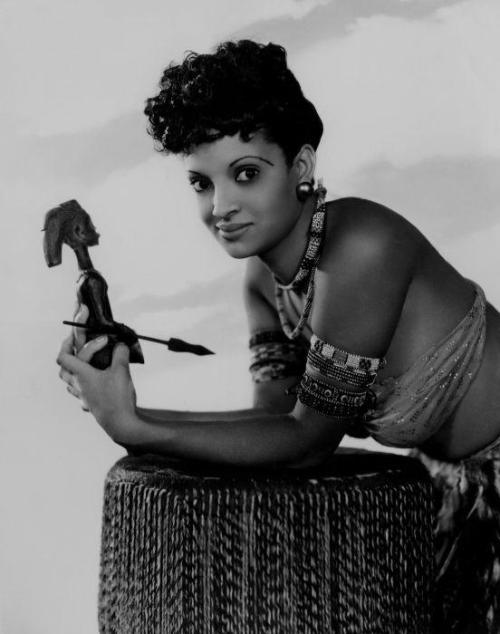






Subscribe to:
Posts (Atom)

